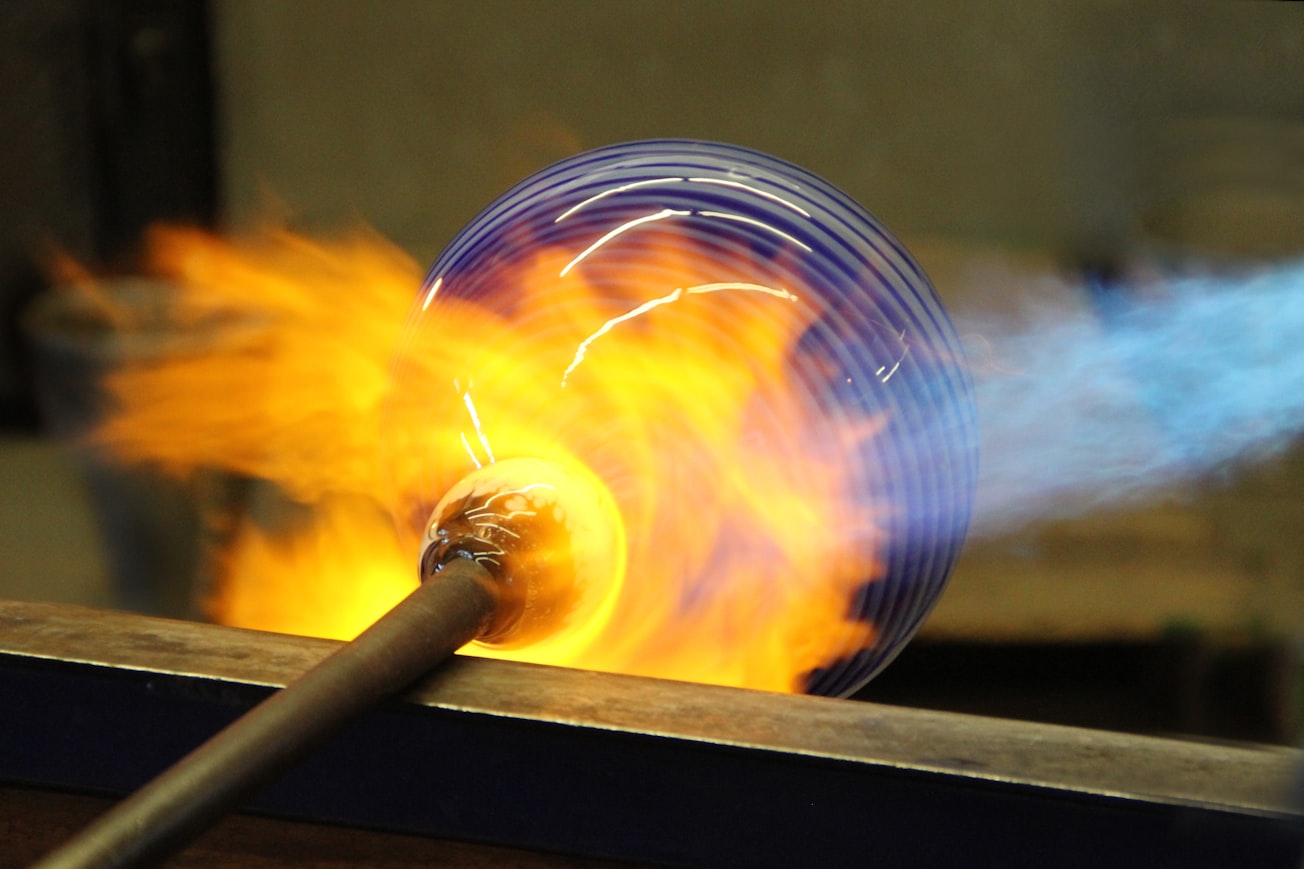What is it about?
We were able to accurately measure the fractions of different boron-oxygen bonding motifs in liquid borates as a function of temperature during quenching and glass formation. These were used to parameterize equations linking changes in boron-oxygen bonding to heat capacity (how much energy is required to raise the temperature of a material) and fragility (how rapidly viscosity changes with temperature on glass formation). Thus we are able to predict the contribution of boron-oxygen bonding changes to these important physical properties over wide ranges of temperature and composition.
Featured Image

Photo by Jan Canty on Unsplash
Why is it important?
Structure-property relationships such as those derived here are incredibly important for understanding and tailoring glass manufacture and properties for optical and battery applications, as well as the properties of supercooled liquids used in energy storage and high-temperature sealing applications.
Perspectives
For me, this work is the latest chapter, but also a culmination of 12 years spent studying the atomic scale structure of liquids and glasses, and particularly borates. I started with an undergraduate project on barium borate crystals and glasses, and continued to work on borates using 11B NMR as a side project during my PhD years. After my PhD I worked at MDI and was able to extend the use of their aerodynamic levitator to borates, the earlier focus having been on much higher melting temperature (and less volatile!) materials like aluminates and silicates. We showed that synchrotron x-ray diffraction can yield very accurate B-O bond lengths and thereby coordination numbers, and in this latest work I have laid out some of the important thermodynamic consequences of the temperature-dependent bonding. Standing on the shoulders of giants of course!
Dr Oliver Alderman
Science and Technology Facilities Council
Read the Original
This page is a summary of: Consequences of sp2–sp3 boron isomerization in supercooled liquid borates, Applied Physics Letters, September 2020, American Institute of Physics,
DOI: 10.1063/5.0024457.
You can read the full text:
Resources
Borate melt structure - Temperature dependent bond lengths & coordination numbers from high-energy x-ray diffraction (Invited Talk slides)
Slides from an invited presentation given at the 9th Conference on Borate Glasses, Crystals and Melts, Oxford, UK, 23-26 July 2017
Consequences of sp2 to sp3 boron isomerization in supercooled liquid borates
Connecting structural changes to the dynamical arrest in supercooled liquids approaching glass transition has proved incredibly elusive, especially experimentally. Herein we make high-quality measurements of the sp3 to sp2 boron isomer ratio in a supercooled lithium borate liquid during quenching and glass formation, leading to parameterization of new analytical expressions for its contribution to configurational heat capacity and entropy loss.
Borate melt structure: Temperature‐dependent B–O bond lengths and coordination numbers from high‐energy X‐ray diffraction
Borate melt structure: Temperature‐dependent B–O bond lengths and coordination numbers from high‐energy X‐ray diffraction
Borate melt structure: a short review
Borate melt structure: a short review
Temperature-Driven Structural Transitions in Molten Sodium Borates Na2O–B2O3: X-ray Diffraction, Thermodynamic Modeling, and Implications for Topological Constraint Theory
Temperature-Driven Structural Transitions in Molten Sodium Borates Na2O–B2O3: X-ray Diffraction, Thermodynamic Modeling, and Implications for Topological Constraint Theory
Liquid B2O3 up to 1700 K: x-ray diffraction and boroxol ring dissolution
Liquid B2O3 up to 1700 K: x-ray diffraction and boroxol ring dissolution
Contributors
The following have contributed to this page










